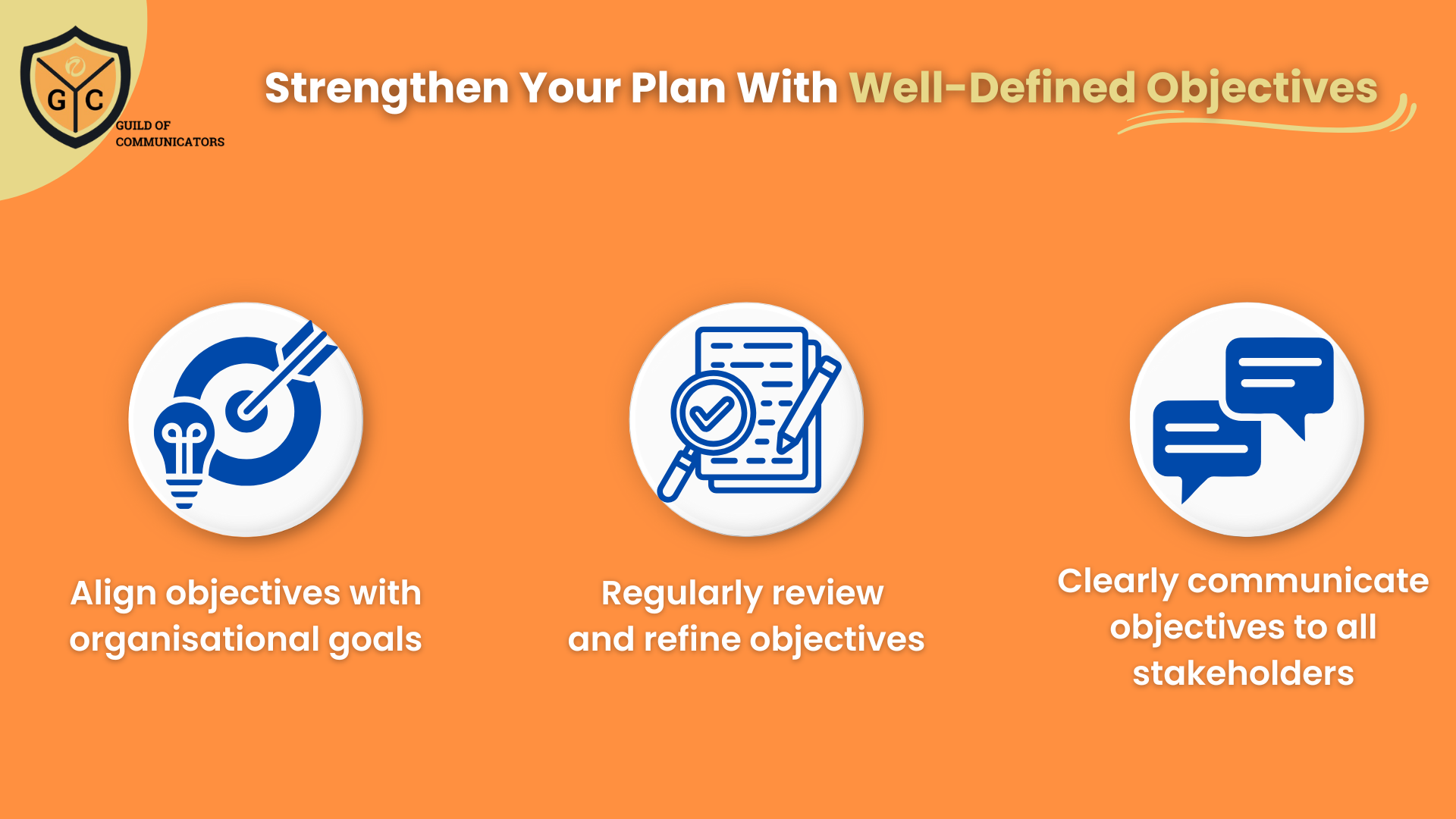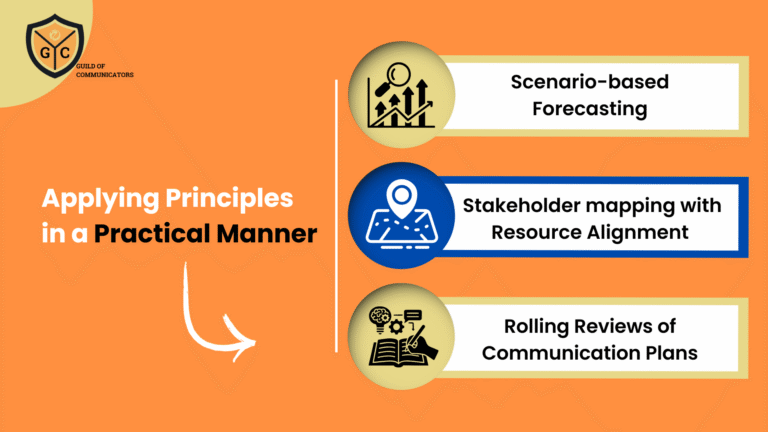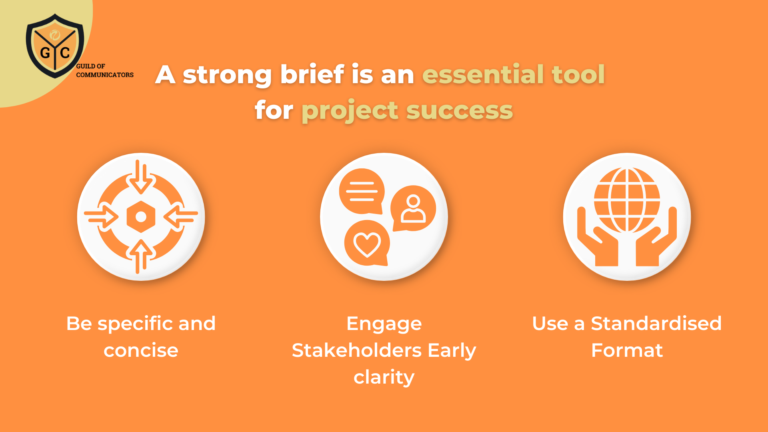A plan needs a clear starting point, and for communication, or project plans, objectives provide the foundation.
They establish direction, define success, and ensure efforts remain focused and measurable. Without a set of well-defined objective/s, plans can lack purpose and structure, making it harder to achieve meaningful outcomes.
The Risks of Starting Without Defined Objectives
When we create plans that lack clear starting or ending points, it results in a lack of clarity, process, and structure. Teams may struggle to understand priorities, leading to inefficiencies and misaligned efforts. Without defined objectives, progress becomes difficult to measure, making it challenging to assess success or failure.
A plan without clear objectives can also impact team morale. When goalposts seem arbitrary, teams may feel like they are working without purpose, reducing motivation and engagement.
In contrast, a structured plan with well-defined objectives provides a sense of direction and purpose, helping teams align their efforts toward meaningful outcomes.
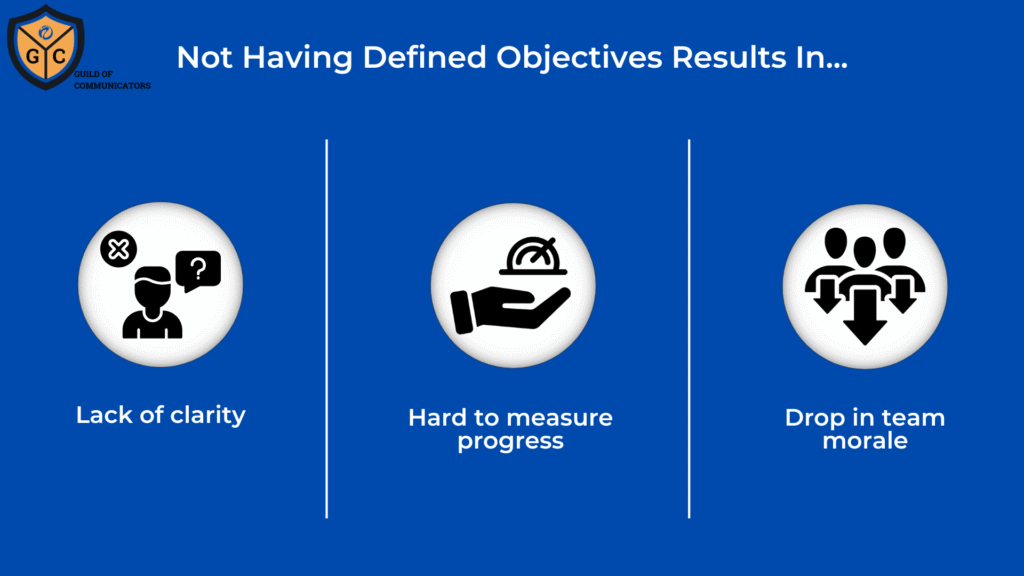
How Defined Objectives Improve Focus and Execution
When we know why we are undertaking a plan, project, or execution strategy, we feel more in control and can focus our creative thinking on achieving our objectives.
A clearly articulated objective/s allow teams to allocate resources effectively, prioritise tasks, and ensure alignment with overall organisational goals.
A strong objective acts as a guiding principle, helping teams stay on track and make informed decisions. It allows for better collaboration, as all stakeholders understand the intended outcomes. This clarity not only improves efficiency but also enhances accountability, ensuring that every action contributes to a well-defined goal.
Crafting Clear Objectives
Is there a specific way to express objectives in a plan? Well-written objectives are specific, measurable, achievable, relevant, and time-bound (SMART). Following a structured approach helps ensure clarity and alignment with strategic goals.
For example, instead of stating, “Improve internal communication,” a clearer objective would be, “Increase employee engagement with internal newsletters by 20% over the next six months.” This specificity allows teams to track progress and assess the effectiveness of their efforts.
By ensuring that objectives are well-structured and clearly defined, organisations can improve execution, streamline decision-making, and enhance overall outcomes.
Clear Objectives Can Improve Decision-Making and Trust
Clarity in objectives benefits both the organisation and individual team members. From a psychological perspective, clearly defined goals reduce uncertainty and increase confidence. When employees understand their role in achieving specific outcomes, they feel a greater sense of ownership and responsibility.
Psychological research suggests that goal clarity enhances motivation. When people know exactly what they are working towards, they are more likely to stay committed and engaged. This is because clear objectives create a structured pathway, reducing cognitive overload and making it easier to prioritise tasks.
Additionally, well-defined objectives foster trust within teams and across the organisation. When expectations are clear, collaboration improves, and misunderstandings decrease. This creates a more cohesive working environment where everyone is aligned toward common goals.
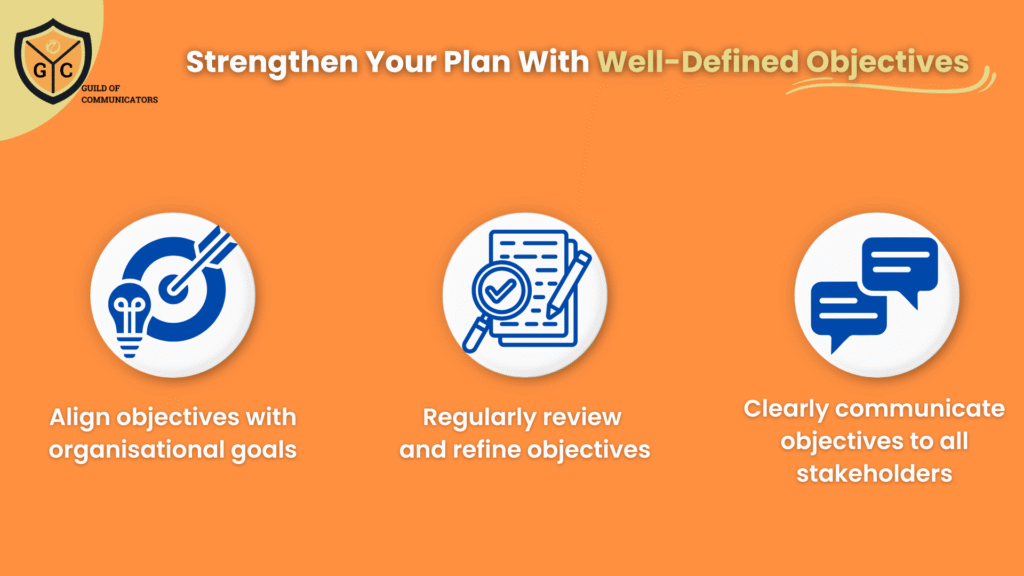
Strengthening Your Plans with Well-Defined Objectives
Setting clear objectives is a fundamental step in developing effective communication, execution, and project plans. Well-defined objectives provide direction, improve efficiency, and enhance team motivation.
To ensure that objectives are effectively incorporated into a communication plan, consider the following best practices:
- Align objectives with organisational goals. Objectives should directly contribute to broader strategic priorities, ensuring that communication efforts support business success.
- Regularly review and refine objectives. Plans are dynamic, and objectives may need adjustments based on performance insights and evolving priorities.
- Clearly communicate objectives to all stakeholders. Ensuring that all team members understand the objectives helps maintain alignment and accountability throughout the execution process.
By applying structured principles, leveraging psychological insights, and integrating best practices, organisations can create plans that not only guide action but also drive meaningful impact. Investing time in crafting clear objectives ensures that every effort contributes to achieving tangible results.
*****
Join the Guild of Communicators at www.gocommunicators.com.
The Guild of Communicators (Go Communicators) stands as the preferred community for communicators seeking to elevate their craft. Through our Academy of Excellence, we provide best-in-class frameworks, fit-for-purpose resources, and opportunities that support members in achieving professional excellence.
We provide the following resources, tools and opportunities to members:
- Best-in-Class Resources: We provide our members with access to frameworks, playbooks and tools that empower them to achieve and maintain professional excellence.
- Continuous Learning and Growth: Through our comprehensive training programmes, workshops, delivered digitally, 24/7 and in-person, we support the ongoing professional development of communicators.
- A Supportive Network: GOC fosters a vibrant community where communicators can connect, collaborate, and support each other, creating a network that champions mutual growth and success.
- Shared Knowledge and Expertise: Our members benefit from the collective wisdom and experience of a diverse group of communication professionals, enhancing their skills and perspectives.
Go Communicators is dedicated to amplifying the impact and value that communicators bring to their organisations, highlighting their crucial role in driving success and growth.
We equip our members with the strategies and tools needed to become influential leaders and business partners within their organisations, enhancing their ability to drive positive change and outcomes.
Through our support and resources, communicators can demonstrate clear, measurable outcomes that showcase their value and impact, reinforcing their importance to their organisations.
Join the Guild of Communicators at www.gocommunicators.com
Subscribe to join over 1500+ communicators and brands getting value every Tuesday while reading A Communicator’s Perspective, our weekly newsletter.

